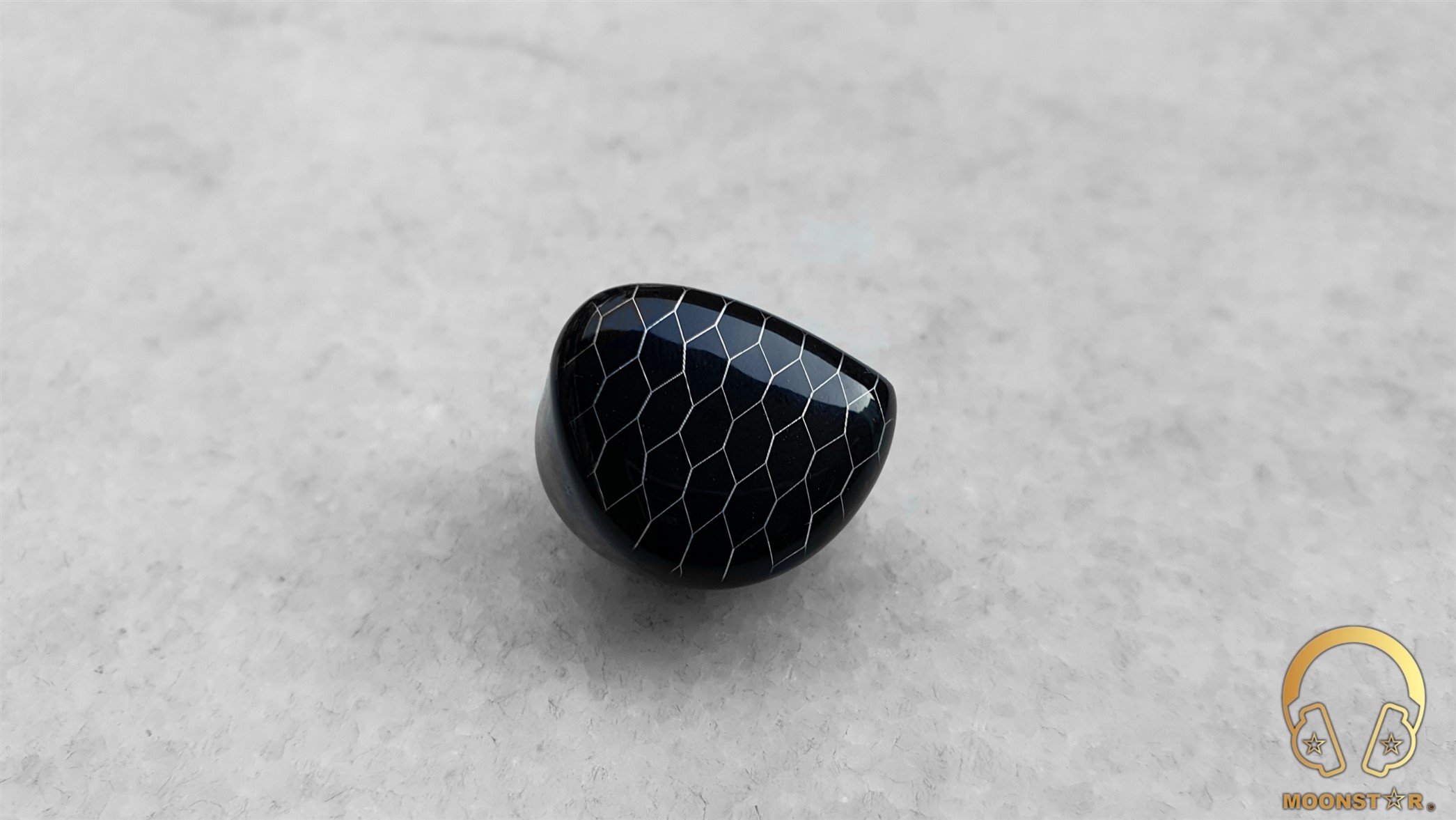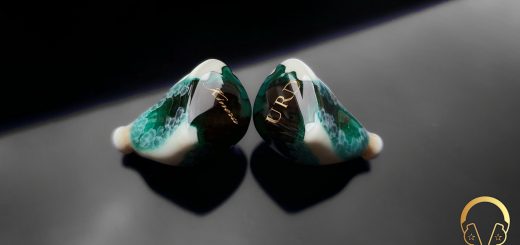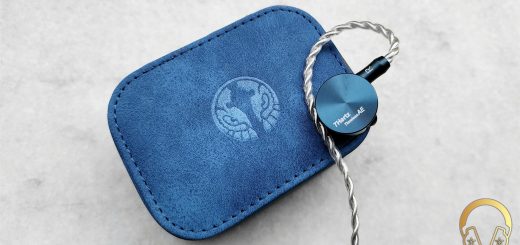TIN HiFi P1 MAX IEM Review

TIN HiFi P1 MAX (Giant Panda) Review
Introduction:
TIN HiFi (Zhongshan Dongting Electronics Technology CO. Ltd.) is a Chinese company located in Guangdong Province in China and is specialized in the production, design and development of portable audio products like In-Ear Monitor.
The TIN HiFi P1 MAX (aka Giant Panda) is the company’s latest member of the P-Series (Planar Series) IEM’s, which comes with a 14.2mm diameter large Planar Magnetic Driver that is located inside a 3D printed monitor shell with a 0.78mm dia. 2-Pin connector interface. The P1 MAX comes with a Single crystal copper wire (108 wires in total) detachable cable.

Disclaimer:
I would like to thank TIN HiFi for providing me the P1 MAX In-Ear Monitor as review sample. I am not affiliated with TIN HiFi or any third person beyond this review and all these words reflect my true, unaltered opinions about the product.
Price & Availability:
The actual price of the TIN HiFi P1 MAX is $ 109,00 US$ (dropped from 189.00 US$). More details can be found under the link below;
Package and Accessories:
The TIN HiFi P1 MAX came inside a relative small black box that was wrapped with a cardboard sleeve in white color that sports the TIN HiFi brand logo and some product related brandings on the top.

Inside the box of the TIN HiFi P1 MAX are the following items/accessories;
- 1 pair x TIN HiFi P1 MAX (aka Giant Panda) In-Ear Monitors
- 1 x Detachable Cable with 0.78mm 2-Pin Connector and 3.5mm SE Headphone Plug
- 3 pairs x Red-Grey Transparent Silicone Ear Tips
- 6 pairs x Dark-Grey Silicone Ear Tips
- 2 pairs x Light-Grey Foam Ear Tips
- 1 x Cloth Bag
- 1 x Print Material



Design & Build Quality:
The TIN HiFi P1 MAX that is also known as the Giant Panda is a pretty lightweight monitor with 4.8grams that has a shell made from 3D printed resin material in a glossy black (piano black) color, which is pretty comfortable with its over the ear design.

TIN HiFi has designed a unique acoustic structure for the 14.2mm diameter large Planar Magnetic Driver. The Planar Magnetic Driver shows a combination of two Dual Array N52 Magnetic Steels with a 2micron diaphragm + light aluminum diaphragm coil in the center.

The faceplates are handcrafted using a 3D printed stainless steel torch wire drawing process with a jewel-like high-gloss finish.

The rear side of each monitor shell sports a slightly angled sound nozzle with a metal mesh in silver color on the top to prevent the insertion of strange particles like dust, earwax, etc. that could damage the internals of the P1 MAX. Here are also the L (Left monitor) and R (Right monitor) markings and two pressure relief openings.

On the top of each monitor shell are the 0.78mm diameter 2-Pin female connectors that do offer a pretty tight and secure fit.

The build quality of the monitors is pretty good but not outstanding when compared to similar priced In-Ear Monitors.
Detachable Cable:
The TIN HiFi P1 MAX comes with a High-Purity Monocrystalline (Single Crystal) Copper wire cable made from 108 wires in total.

The cable has a braided design and sports a soft PVC insulation that offers a very low amount of microphonic effects.

The 2-Pin male connectors do have a metal housing with a glossy silver finish that do sport L (Left) and R (Right) markings as well as plastic ring indicators in red for right and transparent for left the side.

Near the left and right connectors are transparent heat shrink ear guides for extra comfort on the go.

There cable has a metal chin slider and a metal y-splitter with the same glossy silver finish. The y-splitter sports the TIN HiFi brand logo on the top.

The cable features a 3.5mm Single Ended plug with a straight profiled headphone housing made from metal material that a part with a nice carbon fiber pattern.

Comfort and Isolation:
The TIN HiFi P1 MAX comes with a semi-custom monitors shell made from lightweight (4.8grams per earpiece) 3D printed resin material that has a pretty comfortable shape, which fits decent to my average sized ear concha.
The passive noise isolation of the TIN HiFi P1 MAX on a sufficient level that is efficient enough for relative noisy environments such like a metro, bus or train.

Drivability & Pairing:
The TIN HiFi P1 MAX is relative easy to handle, especially for an IEM that comes with a Planar Magnetic Driver. It has an impedance of 16Ω (±15%) and a sensitivity of about 98dB (±3dB @1kHz 0.126V). Sources such like USB DAC/AMP dongles (iBasso DC03, Hidizs S3 Pro) with average amplification are able do drive the P1 MAX to quite loud volumes. However, I highly recommend you to pair the TIN HiFi P1 MAX with more professional (powerful) sources such like a Portable Amplifiers/DAC/AMP’s (xDuoo XD05 Plus, iFi Audio Gryphon) or with more with more powerful DAP’s (for example FiiO M11 Plus, iBasso DX300) to hear the true potation of this quite capable IEM.

Technical Specifications:
- Driver Type : 14.2mm Diameter Planar Magnetic Driver
- Frequency Response : 10Hz-20 KHz
- Impedance : 16Ω±15%
- Sensitivity : 98±3dB @1kHz 0.126V
- Max Distortion : 3% @1kHz 0.126V
- Rated Power : 5mW
- Max. Power : 10mW
- Interface : 0.78mm dia. Gold-plated 2-Pin connectors
- Plug : 3.5mm Single Ended gold plated plug carbon fiber tube
- Cable length : approx 120cm
- Cable material : High-Purity Monocrystalline (Single Crystal) Copper
- Housing material : 3D Painted Resin Material

Sources:
- In-Ear Monitor’s : TIN HiFi P1 MAX, TRN I3 Pro
- DAP/DAC/AMP’s : FiiO M11 Plus, iFi Audio xDSD Gryphon, HiBy FC4, Shanling UP4 2022

Albums & Tracks used for this review:
- Adele – My Little Love (Spotify)
- Randy Crawford – On Day I Will Fly Away (Flac 16bit/44.1kHz)
- Hayley Westenra – Odyssey Album (Dezzer HiFi)
- Dionne Warwick – Walk On By (Flac 16bit/44.1kHz)
- Sarah McLachlan – Angel (Flac 24bit/48kHz)
- Sertap Erener – Aşk (Flac 16bit/44.1kHz)
- Edith Piaf – Non Je Ne Regrette Rien (Flac 16bit/44.1kHz)
- Diana Krall – So Wonderful (DSF)
- Aretha Franklin – I Say A Little Payer (Flac 24bit/96kHz)
- Sonya Yoncheva – (Giuseppe Verdi) II Trovatore, ActI (Flac 24bit/96kHz)
- George Michael – Don’t Let the Sun Go Down on Me (Flac 24bit/192kHz)
- David Bowie – Heroes (Flac 24bit/192kHz)
- Elton John – Rocket Man ((Flac 24bit/96kHz)
- Barry White – Just The Way You Are (Flac 24bit/48kHz)
- Isaac Hayes – Walk On By (Flac 16bit/44.1kHz)
- Sting – Englishman in New York – (Flac 24bit/48kHz)
- Eric Clapton – Wonderful Tonight (Flac 24bit/96kHz)
- B. King – Riding With The King (Tidal Hi-Fi)
- Dave Gahan – Kingdom (Tidal Hi-Fi)
- U2 – Sunday Bloody Sunday (Flac 16bit/44.1kHz)
- Bro Safari, UFO! – Drama (Deezer HiFi)
- Armin Van Buuren – Vini Vici (Flac 16bit/44.1kHz)
- Daft Punk – Doin’ it Right (Flac 24bit/96kHz)
- Jo Blankenburg – Meraki (Spotify)
- Lorde – Royals (Flac 24bit/48kHz)
- Massive Attack – Angel (Flac 24bit/48kHz)
- Toutant – Rebirth (Deezer HiFi)
- Gogo Penguin – Raven (Flac 24bit/192kHz)
- Gogo Penguin – Murmuration (Flac 24bit/192kHz)
- Portishead – It Could Be Sweet (Spotify)
- Max Richter – On the Nature of Daylight (Flac 24bit/96kHz)
- Charly Antolini – Duwadjuwandadu (Flac 24bit/192kHz)
- Ferit Odman – Look, Stop & Listen (Flac 24bit/192kHz)
- Chopin – Nocturn No. 20 In C-Sharp Minor (Flac 16bit/44.1kHz)
- Fazıl Say – Nazım Oratoryosu (Live) (Flac 16bit/44.1kHz)
- Vivaldi – Le QuarttroStagioni “The Four Season” (Deezer HiFi)
- Otto Liebert & Luna Negra – The River (Flac 24bit/192kHz)
- Lunatic Soul – The Passage (Flac 16bit/44.1kHz)
- Deftones – My Own Summer (Shove it) (Flac 16bit/44.1kHz)
- Metallica – Sad but True (Flac 24bit/96kHz)
- Metallica – Master of Puppets (Flac 24bit/96kHz)
- Opeth – Windowpane (Flac 16bit/44.1kHz)
- Megadeth – Sweating Bullets (Tidal Hi-Fi)
- Rush’s – Leave That Thing Alone (Flac 16bit/44.1kHz)
- Slayer – Angel of Death (Spotify)
- Liquid Tension Experiment 2 – Acid Rain (Spotify)
- Yosi Horikawa – Bubbles (Spotify)

The Sound:
The TIN HiFi P1 MAX (aka Giant Panda) is a pretty rich and musical sounding In-Ear Monitor that impressed me with its high value for its price in this area, which sounds eve better after some intensive burn-in (around 80 hours). The P1 MAX has a mildly warm tonality that is not overdone, which adds the overall presentation a nice sense of musicality. The lower frequency region is reproduced in a pretty fast and controlled manner. The midrange on the other hand has a lively, airy and dynamic character, while the treble range offers a decent level of presence and brilliance without to sound overly bright or shouty.
The TIN HiFi P1 MAX review has been written after a burn-in period of about 100 hours. I have used the stock dark grey silicone ear tip and the stock Monocrystalline Copper wire cable that are included o the package.

Bass / Midrange / Treble / Soundstage & Imaging:
The TIN HiFi P1 MAX comes with a pretty entertaining bass tuning that stands out with its decent level of authority and fast response, which is quite impressive for a IEM below the 200 US$ price range. The lows do have a good level of layering and natural decay along with a decent grade of intensity, speed and extension.
The subbass region of the P1 MAX is slightly more pronounced compared to the midbass area, which shows an efficient grade of depth and rumble that is pretty suitable for genres from Metal and Jazz up to Pop & Electronic Music. The midbass region of the TIN HiFi P1 MAX is reproduced in a pretty fast and controlled manner that shows a tonality, which is closer to a Dynamic Driver compared to typical Planar Magnetic Drivers. I didn’t hear any remarkable negative situations such like a midbass-hump, muddiness and mixings. The slam effect of the midbass is pretty strong if called upon and shows an excellent sense of clarity and resolution for a product for such an affordable price.

The midrange of the TIN HiFi P1 MAX has a moderately warm tonality along with an excellent sense of clarity and airiness that is audible both while listen to instruments and vocals. The P1 MAX is successful with both male and female voices. Male vocals such like Barry White, Dave Gahan or Sting are shown with a good sense of body and depth thanks to the fairly well adjusted lower midrange tuning. Female voices such like Aretha Franklin, Adel or Sertap Erener on the other hand do sound pretty musical, emotional and are reproduced in a quite lively and transparent manner.
The P1 MAX has a slightly warmish, pretty musical and natural instrument tonality. Acoustic guitars for example are reproduced in a mildly bassy, sweet and nicely warm tonality, while pianos do sound slightly bright, pretty fast yet controlled. Violins on the other hand are vibrant and lively without to show any remarkable sharpness.

The TIN HiFi P1 MAX has a pretty vibrant and detailed treble presentation, which offers an adequate sense of airiness and sparkle that prevents any type of congestions and muddiness while listen to a wide variety of music genres.
The transitions from the upper midrange towards the lower treble region are in general nicely controlled in moments when instruments such like an electro guitar or a soprano voices is produced with higher level of distortion. The lower treble range is shown with an efficient grade of presence along with an adequate level of clarity and definition, while listen to instruments such like violins or pianos since here is an audible roll-off. The upper treble region has a peak around the 7 – 8 kHz region that was quite audible while listen to hi-hats or snare drums that adds them a nice sense brilliance and sparkle, while the extension is on a moderate level.

The TIN HiFi P1 MAX offers a sufficient performance in terms of separation and placement of vocals and instruments. The soundstage sounds in general pretty airy and spacious and shows an adequate sense of depth and wideness, while the height of the stage in on an average level.
Comparison:
TIN HiFi P1 MAX versus TRN I3 Pro:
Both the TIN HiFi P1 MAX and the TRN I3 Pro are equipped with a Planar Magnetic Drivers, however, the I3 Pro has 1x BA and 1xDD diver in addition, which makes it to a quite interesting Hybrid IEM.
The TRN I3 Pro shows a slightly warmer and fuller overall sound presentation compared to the TIN HiFi P1 MAX. The subbass of both IEM’s has a good level depth and extension, while the P1 MAX has the slightly edge when it comes to the decay, authority and clarity in this area. The midbass region of the I3 Pro sound fuller and more impactful, while it is not as fast and controlled than those of the P1 MAX, which has also the upper hand when it comes to the resolution in this area.
The midrange of the TRN I3 Pro has a warmer tonality and slightly fuller presentation. The TIN HiFi P1 MAX on the other side shows a higher sense of transparency and airiness, which makes it more successful in songs with complex instrument passages. The lower midrange of the I3 Pro offers more body and depth when I listen to vocals, especially to male voices. Both the P1 MAX and the I3 Pro do have a relative smooth and controlled upper midrange response where the P1 MAX has the slightly edge when it comes the naturalness and resolution.
The lower treble area of the TRN I3 Pro is slightly more highlighted and offers additional clarity and definition, while the TIN HiFi P1 MAX is superior in terms of overall treble extension, sparkle and detail retrieval due to a slightly boost in the upper treble area.
The soundstage of both IEM’s offers a sufficient performance in terms of separation & placement of instruments and vocals. The TIN HiFi P1 MAX has the slightly edge when it comes to the depth and wideness of the stage, while the height is pretty similar.

Conclusion:
The P1 MAX is maybe not the most esthetic looking IEM on the market at this price range, which is otherwise successful when it comes to fit and comfort. However, the real highlight that TIN HiFi offers is a well-tuned Planar Magnetic Driver IEM, which stands out with its fast and entertaining bass response, pretty transparent and airy midrange character, and a treble range that shows an adequate sense of presence and extension when I did listen to a wide variety of genres.
Pros and Cons:
- + Easy to like Sound Character
- + Planar Bass with Good Speed and Authority
- + Transparent and Airy Midrange Presentation
- + Sparkle and Presence of the Upper Treble Register
- + Fit & Comfort
- + Value for your Money (especially after TIN HiFi’s latest Price Adjustment)
- – Slightly Roll-Off in the Lower Treble Area
- – Not the King of Planar IEM when it comes to the Staging
- – A protective Hard Case would be Welcome
Thank you for the Read!











